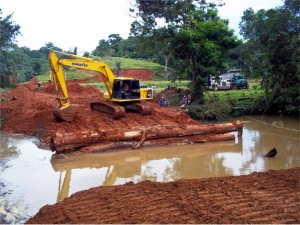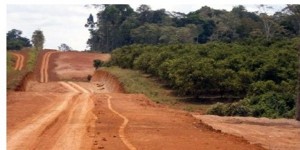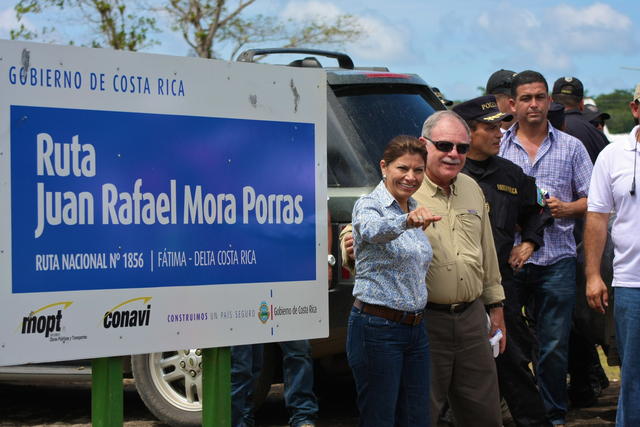San Jose, Costa Rica – Serious trail errors are exposed to show that it will most likely collapse during the rainy season. Not only was an environmental study not done on the trail, the government did not properly assess the effects of the rain on the trail nor it seems actually use the $40 million that was budgeted for it to actually do the project. I wonder what elected official will be resigning next with 5 or 6 million dollars in his or her pocket?
 Much of ¢ 20,000 million that the country has invested in building the trail border with Nicaragua, could be lost during this rainy season warned the engineers of the National Laboratory of Materials and Structural Models (LANAMME) at the University of Costa Rica, after inspection of 97 of the 160 kilometers of this road, earlier this month.
Much of ¢ 20,000 million that the country has invested in building the trail border with Nicaragua, could be lost during this rainy season warned the engineers of the National Laboratory of Materials and Structural Models (LANAMME) at the University of Costa Rica, after inspection of 97 of the 160 kilometers of this road, earlier this month.
In its report, the experts say that lack of adequate drainage, and the instability of cut and fill material that were performed on Route 1856 could become a headache with the arrival of the rains.
“In its present condition, the trail border presents a high risk of collapse during the rainy season,” the study concludes in its findings.
LANAMME According to the report, the said consequences of this collapse can result in “a substantial loss on the investment made so far.”
During their inspection, LANAMME mission found that the steep slopes and irregular layout of the track was based on the experience of machine operators without topographical and geotechnical information .
Government authorities have refused to refer to the scope of the study claim that they still do not know what the effects will be. Obviously they think that they are engineers and no better then the experts.
For LANAMME the objective was to assess the technical configuration, quality and functionality of the works carried out on the trail border.
Another of their findings was the use of inappropriate materials to stabilize the surfaces of the road.
Elsewhere, were very sandy materials that are can be easily displaced by traffic, wind or water.
“Most of the time, these materials were hauled from the river long distances and represent a significant cost. In any case, it is inadmissible to use materials with undesirable characteristics, “says the report in its findings.
The Government announced the construction of the trail as an alternative to the San Juan River for the transit of people and goods at the border with Nicaragua.
Its construction was carried out under emergency decree number 36440, signed by President Laura Chinchilla, which allowed her to have access to the money and escape the controls of environmental legislation.
The LANAMME report warns that despite the state of emergency, the design problems could be solved in a short time, using techniques of georeferencing and software engineering to guide the work. Which of course the Costa Rican government will most likely not want to do.
One of the threats currently facing the trail border is the lack of adequate drainage to channel the flow of rain that will fall during the coming months.
Engineers have found that in the construction of that containers were placed on the path as structures for draining river.
These containers are already deformed and at risk of collapse, as evidenced by the photographs included in the report.
“As a not clear what the scope of this study, or what is the validity of the statements made there, it would be irresponsible to comment,” he said yesterday at the National Communication Minister, Francisco Chacon.
For his part, Luis Salas, executive director of the National Roads Authority (Conavi), said he would like to read the document before deciding.

